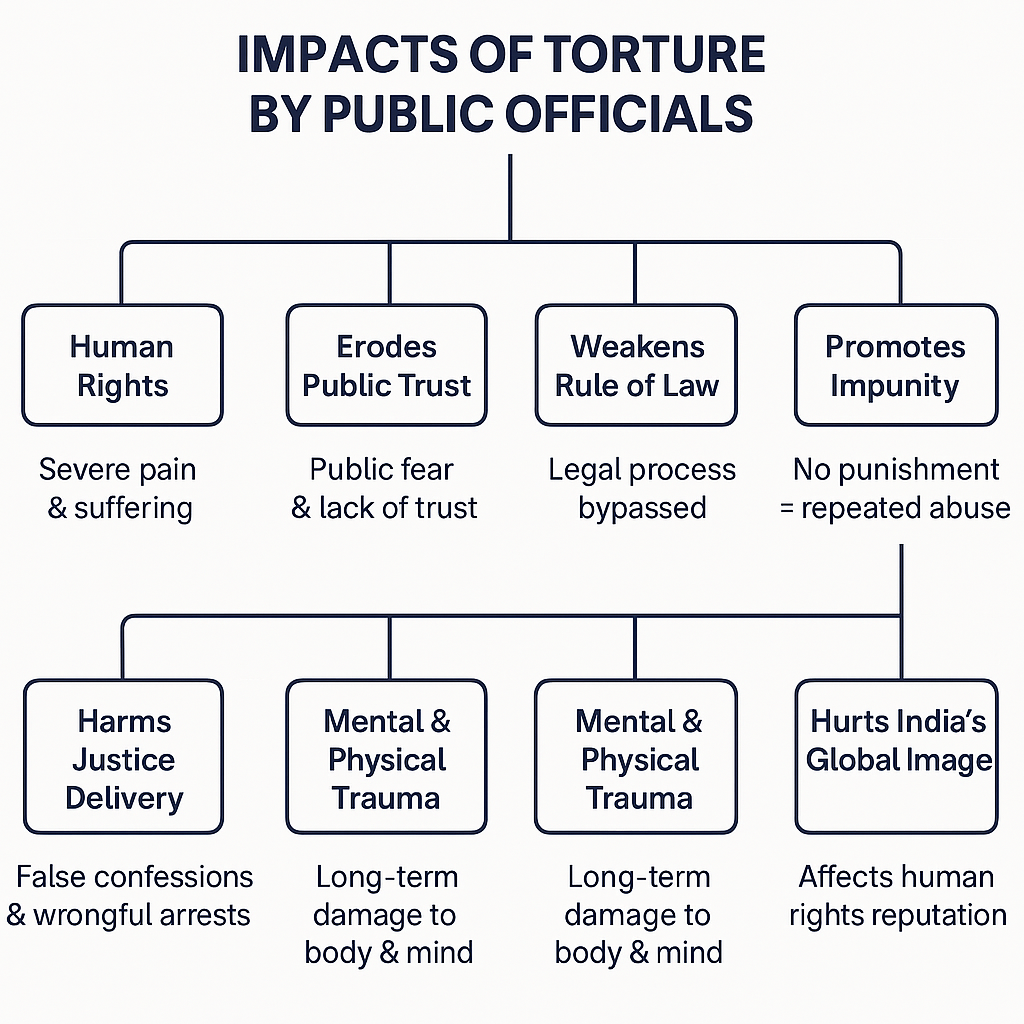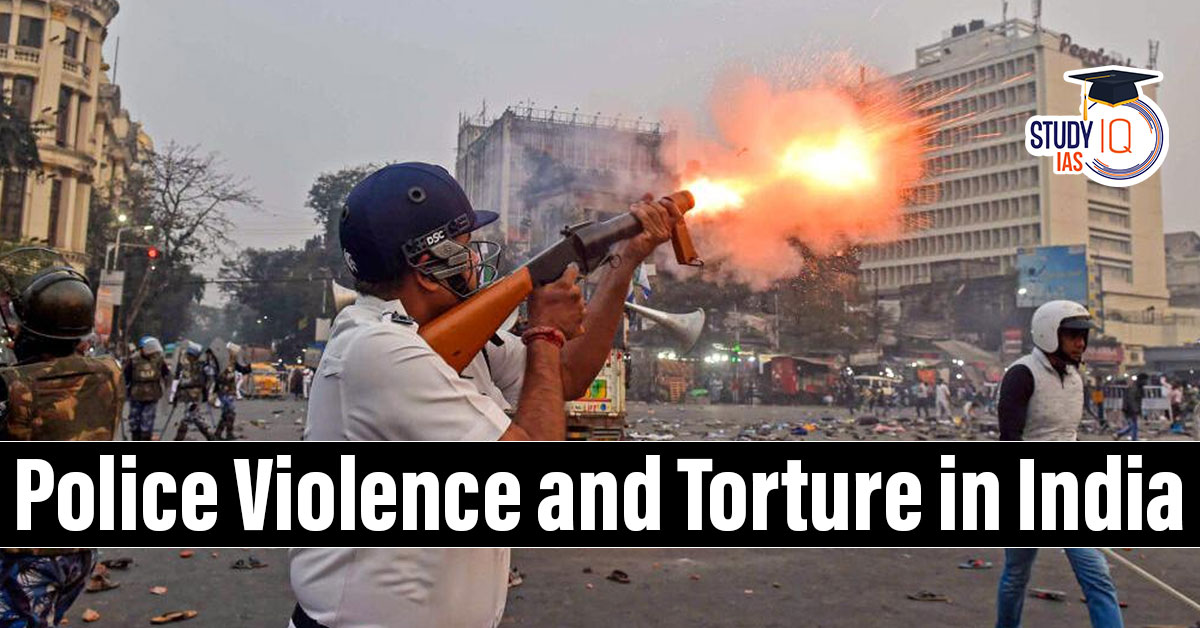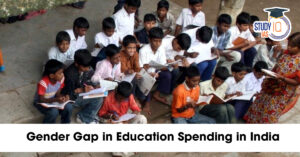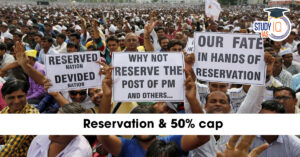Table of Contents
Context: Recently, Common Cause (NGO), in collaboration with the Lokniti Programme of the Centre for the Study of Developing Societies (CSDS), released a comprehensive report on police torture and (un)accountability.
What are the Nature of Police Violence and Torture in India?
- Widespread Acceptance of Tough Methods: 55% of police personnel believe it is important to use “tough methods” to instil fear.
- 30% justify third-degree methods for serious crimes; 9% even for petty offences.
- Justification of Extra-Legal Actions: 22% prefer killing dangerous criminals over legal trial.
- One in four justify mob violence in sexual harassment and child-lifting cases.
- Disproportionate Targeting of Marginalised Groups: Victims largely include Adivasis, Dalits, Muslims, illiterate individuals, and slum dwellers.
- Lack of Legal Oversight & Accountability: Procedures of arrest are often not followed; in some states, only 41% report “always” the following procedure.
- Near-zero convictions for custodial deaths between 2018–22 despite multiple reported cases.
| 🕊️ UN Definition of Torture (as per the United Nations Convention Against Torture, 1984 — Article 1) |
|
Underlying Causes and Contributing Factors
- Colonial Legacy of Policing: Continued use of colonial-era mindset of control, coercion, and fear.
- Lack of Accountability Mechanisms: No effective punishment or deterrent for custodial torture or deaths.
- Discrepancies in data and lack of transparency (e.g., different agencies reporting different custodial death figures).
- Political & Institutional Pressure: Pressure from politicians and senior officers to deliver “quick results” leads to shortcuts and coercion.
- Inadequate Training: Lack of training in human rights and modern interrogation techniques.
- Passive Role of Judiciary and Medical Examination: Magistrates often act as “silent spectators,” not questioning or documenting custodial abuse.
- MLE is usually conducted by non-specialist doctors like eye specialists, anesthesiologists, or general physicians, which undermines the integrity of the findings.
|
Fact |
|
- Public Support for Quick Justice: Public disillusionment with the slow judicial process leads to societal tolerance of police excesses.
- No Standalone Law Against Torture: India has not ratified the UN Convention Against Torture.
- The absence of a specific anti-torture law enables continued impunity.

Way Forward
- Legal and Policy Reforms: India must ratify the Convention and enact specific anti-torture legislation to criminalize custodial violence as a distinct offence.
- Amend Laws and Guidelines: Update the Police Act, 1861, and enforce Supreme Court directives like those in the K. Basu case to ensure transparency in arrests, detentions, and interrogations.
- Accountability Mechanisms: Establish independent oversight bodies to investigate allegations of police abuse and ensure prosecution of guilty officers.
- Training and Capacity Building Human Rights Training: Incorporate human rights laws into police training curricula to sensitize officers about the illegality and immorality of torture.
- Modernized Policing Techniques: Equip police with tools for non-violent interrogation methods, forensic science, and technology-driven crime investigation.
- Depoliticization of Police: Implement measures like empowering State Security Commissions to reduce political interference in policing.
- Workload Reduction: Address manpower shortages and improve working conditions to reduce the stress that often leads to violent behaviour.
- Community Policing Grassroots Engagement: Adopt community policing models that bridge trust gaps between police and citizens.
- Initiatives like Kerala’s Janamaithri Suraksha Project can be scaled nationwide.
- CCTV Surveillance in Police Stations: Install night-vision cameras as mandated by the NHRC to monitor custodial practices and deter torture.
- Victim Protection Laws: Enact robust victim and witness protection legislation to encourage reporting of torture cases without fear of retaliation.
- Cultural Change Shift Police Culture: Address the moral justification many officers hold regarding torture through systemic changes in institutional values and community engagement.


 Geo-tagging of Buildings During Upcoming...
Geo-tagging of Buildings During Upcoming...
 Gender Gap in Educational Expenditure in...
Gender Gap in Educational Expenditure in...
 Reservation and 50% Cap: Constitutional ...
Reservation and 50% Cap: Constitutional ...

























